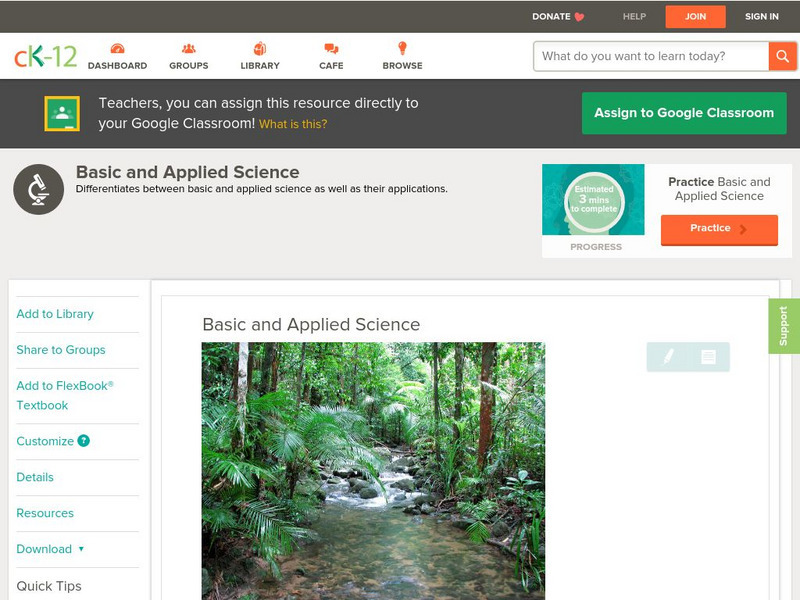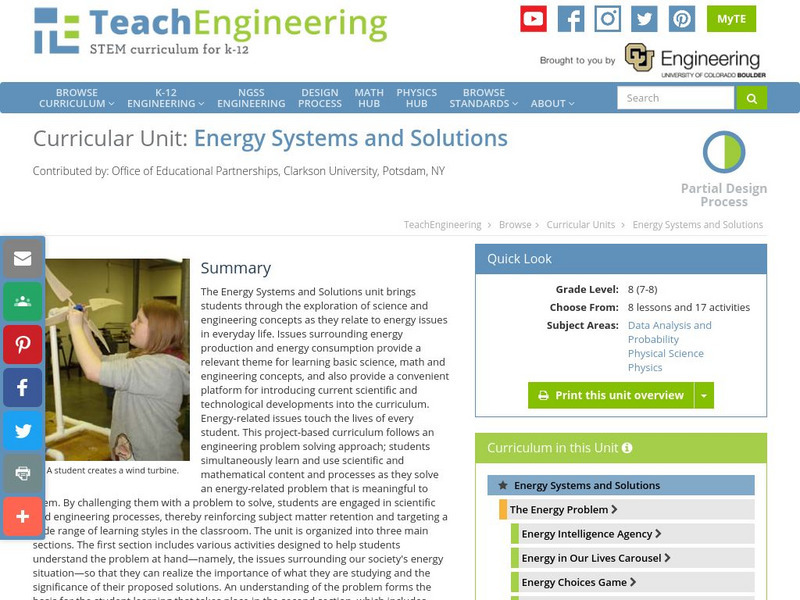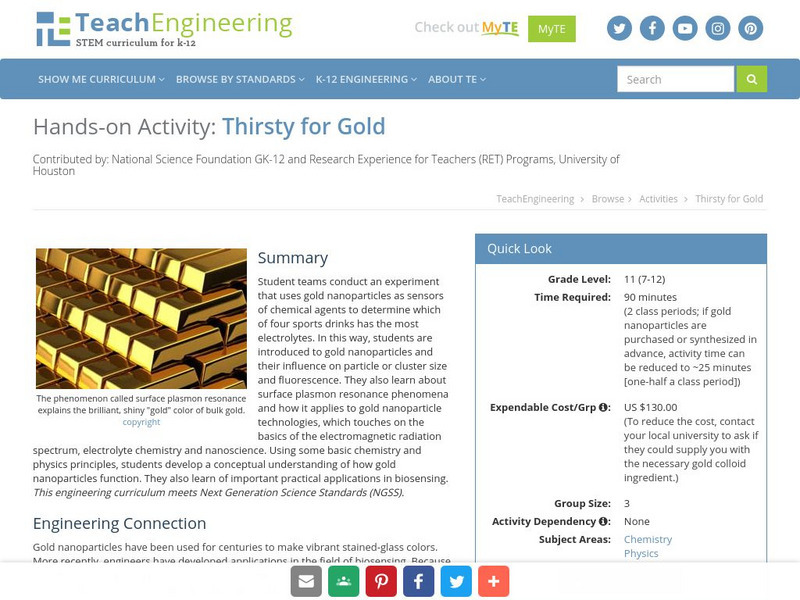Curated OER
Pythagorean Theorem by Graphic Manipulation
There are many different ways to show a proof of the Pythagorean Theorem. Here is a nice hands-on paper cutting activity that shows a graphic representation. You can even challenge your young Pythagoreans to come up with their own...
Curated OER
Arsenic Globally
Students, using directed questions, identify five internet resources. They use these resources to identify relevant information by highlighting those sections that address the provided questions. Students present the answers to these...
Curated OER
Check It Out
Students discuss the many processes involved with personal banking. They create their own budget based on their career choices. They also practice balancing a checkbook.
Curated OER
Indian Languages
Fifth graders explore the different types of Indian languages used today in the United States.
Curated OER
Diving, Flying, & Climbing
Students explore Boyle's Law. For this Boyle's Law lesson, students complete problems involving Boyle's Law. They examine the effects of Boyle's Law upon the human body. Students use the Internet to complete a lab activity.
Curated OER
Mississippi’s Electricity: From Generation to Consumption
Eighth graders discover how electricity is produced. In this physics lesson plan, 8th graders infer about the future of Mississippi's energy industry. They participate in a Smart Board interactive activity at the end of the lesson plan.
Curated OER
Automated Vehicle Programming Design
Students design a program to make an automated vehicle perform a specific task. In this robotics lesson, students play the role of scientists competing to win a factory's contract. They present their algorithm to class.
CK-12 Foundation
Ck 12: Life Science: 1.5 Basic and Applied Science
Get an overview of applied science where people use and apply information obtained through basic science.
CK-12 Foundation
Ck 12: Life Science: Basic and Applied Science
[Free Registration/Login may be required to access all resource tools.] Science can be "basic" or "applied." The goal of basic science is to understand how things work. Basic science is the source of most scientific theories. Applied...
Science Struck
Science Struck: Differences Between Basic and Applied Research
Explains the definitions of basic and applied research and what the differences are between them. Provides examples of what they look like in different disciplines.
TeachEngineering
Teach Engineering: Energy Systems and Solutions
The Energy Systems and Solutions unit brings students through the exploration of science and engineering concepts as they relate to energy issues in everyday life. Issues surrounding energy production and energy consumption provide a...
TeachEngineering
Teach Engineering: Fun Look at Material Science
Students are introduced to the multidisciplinary field of material science. Through a class demo and PowerPoint presentation, they learn the basic classes of materials (metals, ceramics, polymers, composites) and how they differ from one...
PBS
Pbs Nova: Estimating Up, Up and How Far Away?
Use this cleaver site to estimate how far away a hot air balloon is from you using your thumb and arm length.
Science Education Resource Center at Carleton College
Serc: Hands on Geology: K 12 Activities and Resources
A collection of twenty-two geology activities with teacher's guides. The activities range from basic sedimentary geology and paleontology to applied geology. A material and information resource list is included.
Khan Academy
Khan Academy: Probabilities in Genetics
Article reviews some probability basics then investigates how these calculations can be applied to genetics problems involving relatively large numbers of genes. Explores how the sum rule and the product rule can be used to solve these...
PBS
Nova Online: How Many Pearls? A Weight & Volume Game
This interactive game has students apply skills in estimation, measurement, and basic addition using pearls. Students are asked to estimate the number of pearls in a treasure chest by making predictions and using number sense. The skills...
ClassFlow
Class Flow: Electricity
[Free Registration/Login Required] Students can use this Flipchart to learn and apply Ohm's law to basic circuitry problems. Students are introduced to the relationship among voltage, current, and resistance, and then apply their newly...
TeachEngineering
Teach Engineering: Thirsty for Gold
Student teams conduct an experiment that uses gold nanoparticles as sensors of chemical agents to determine which of four sports drinks has the most electrolytes. In this way, students are introduced to gold nanoparticles and their...
TeachEngineering
Teach Engineering: Engineering Pop Ups
Students learn about applied forces as they create pop-up-books - the art of paper engineering. They also learn the basic steps of the engineering design process.
McREL International
Mc Rel: Whelmer #9 Learning Activity: Nickel Karate
An easy to do activity that investigates the basic theories of inertia. The activity is in lesson plan format that meets NSES standards.

















